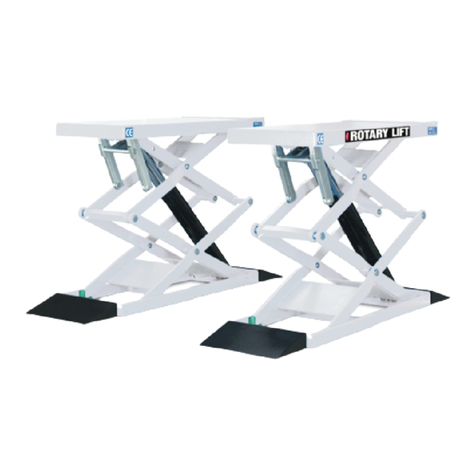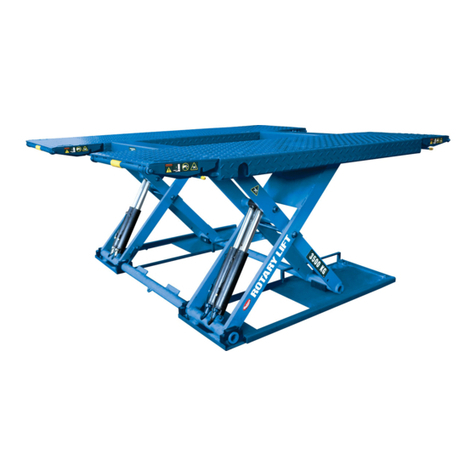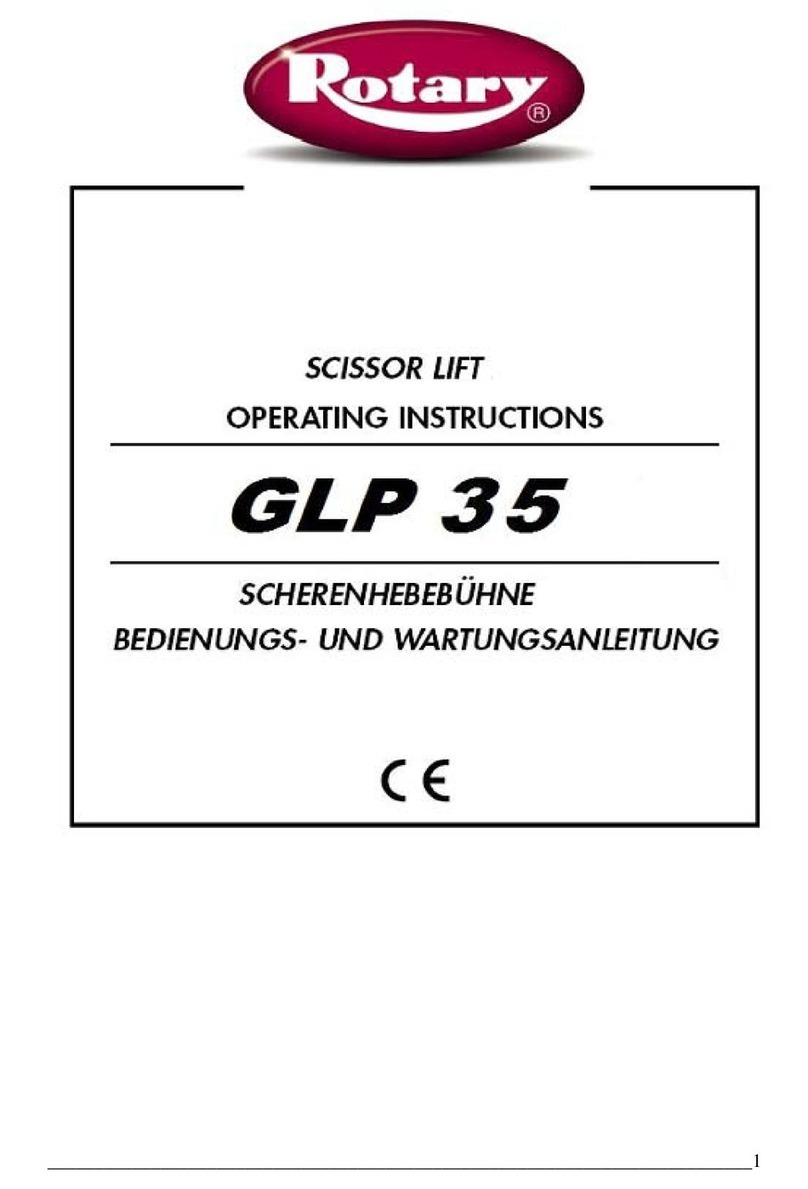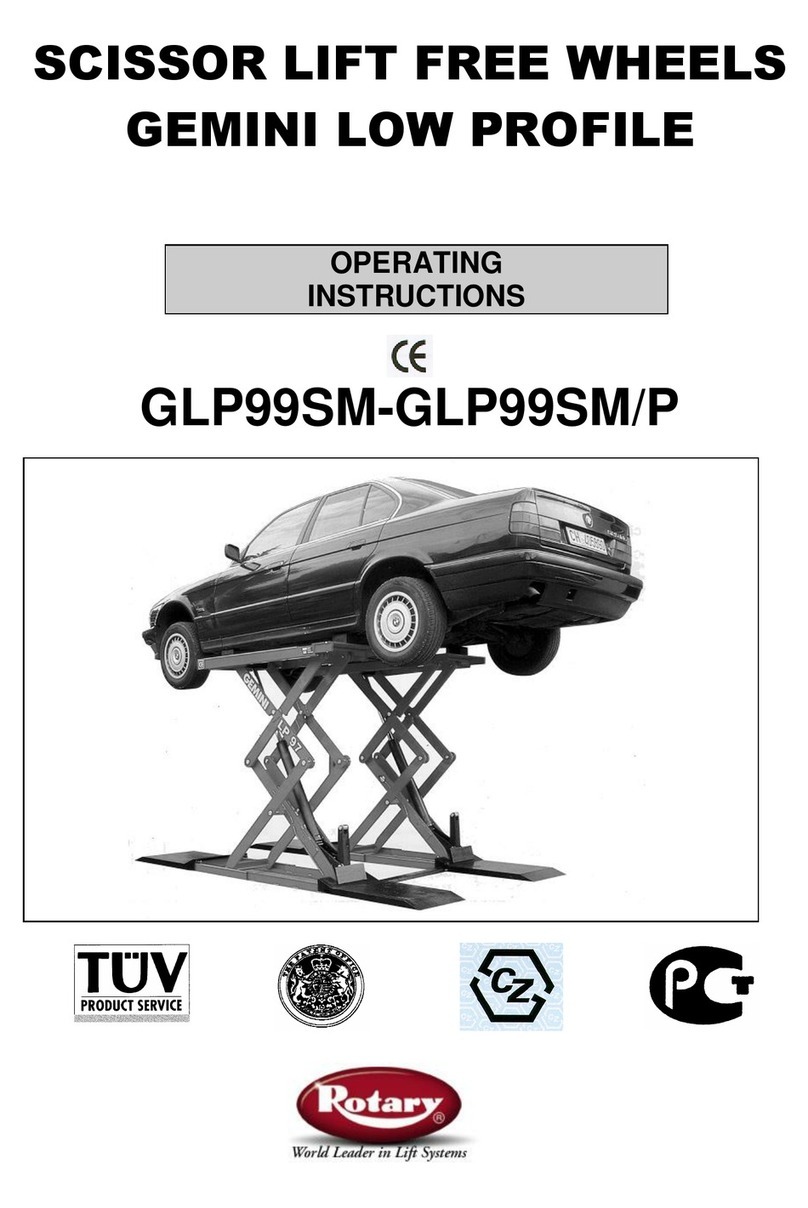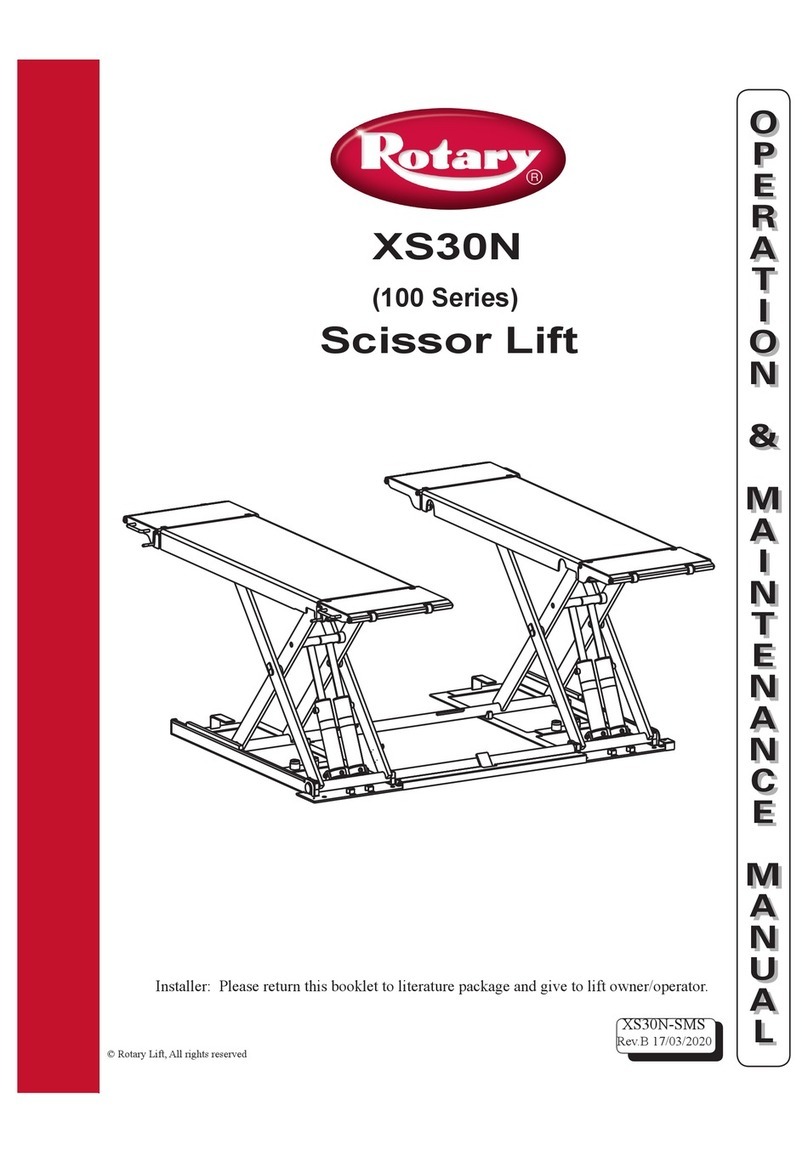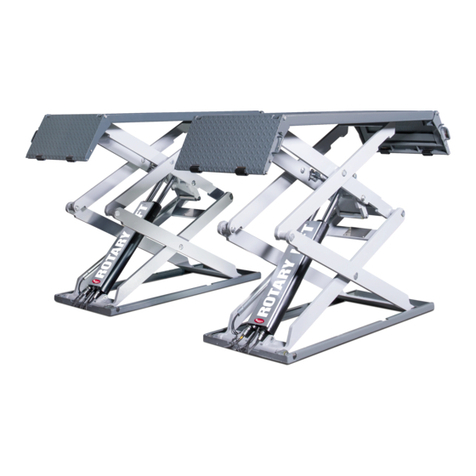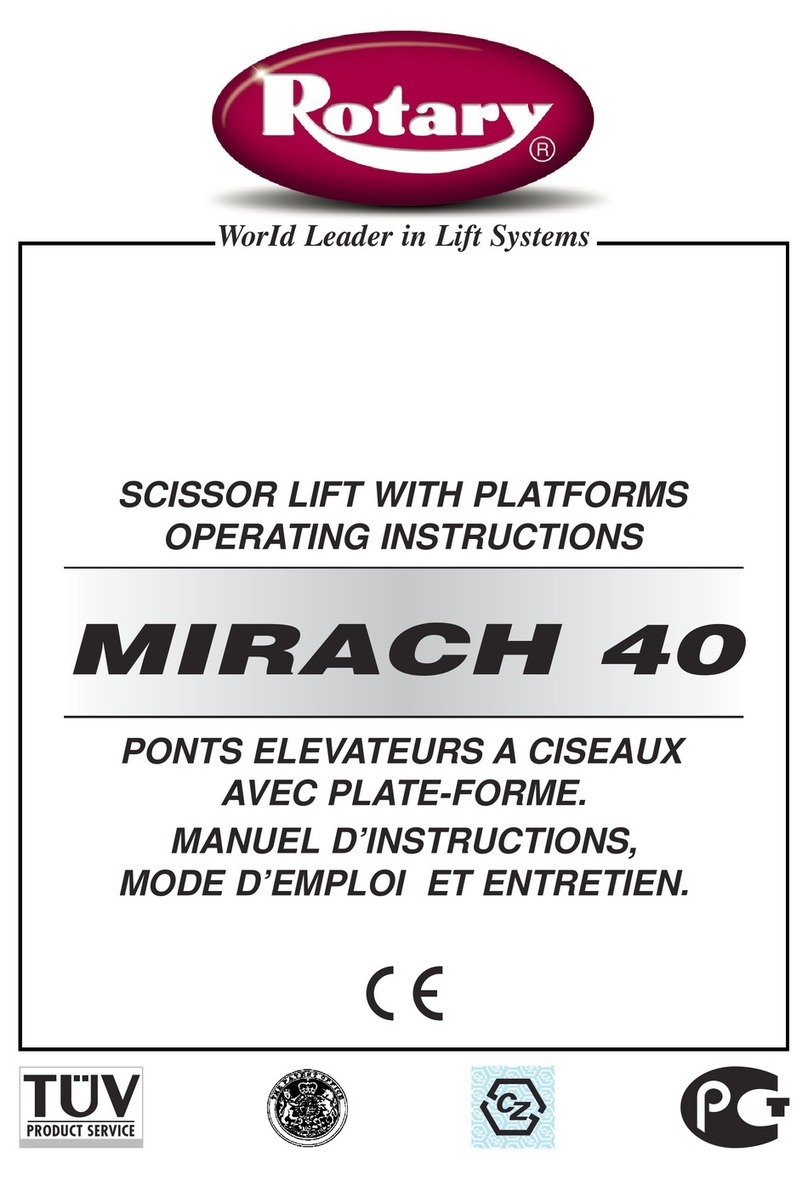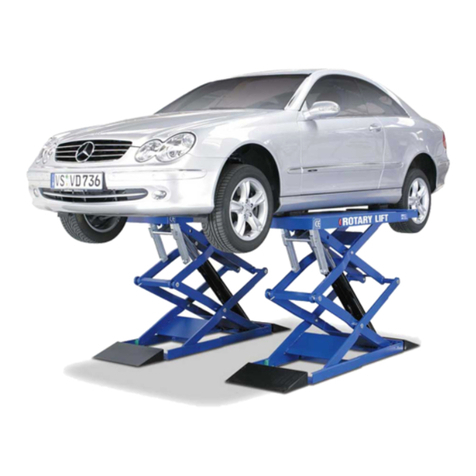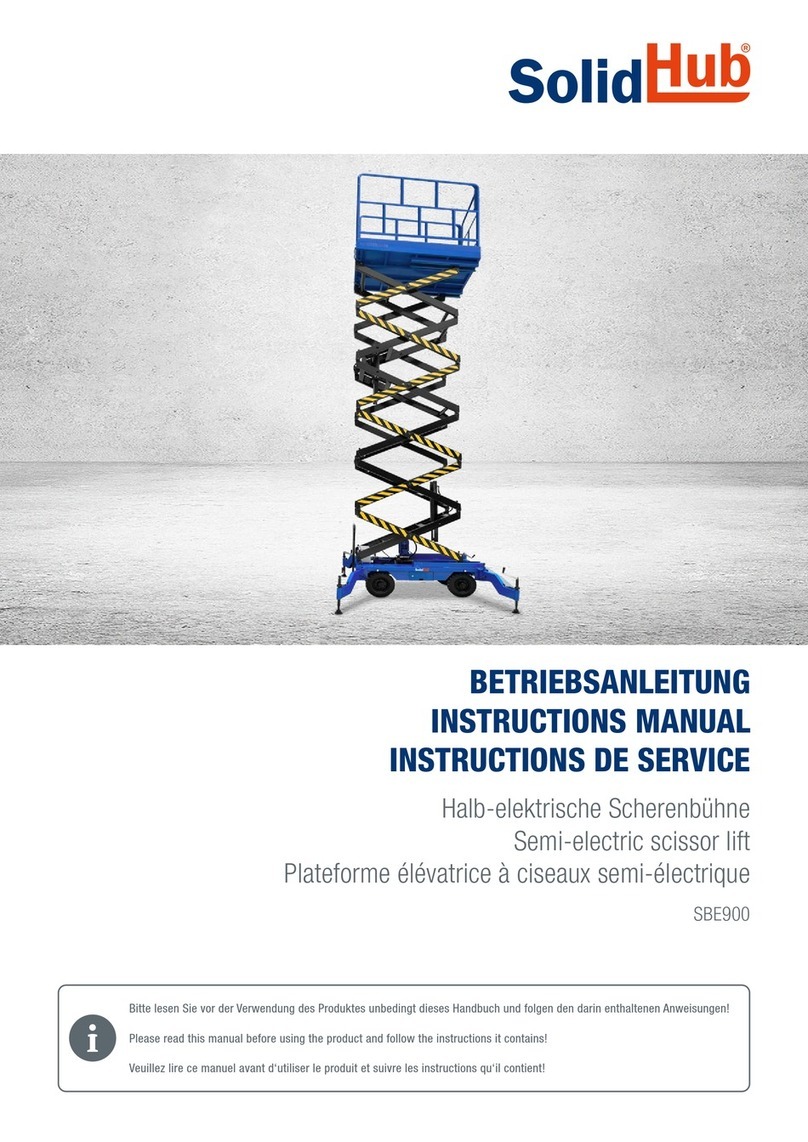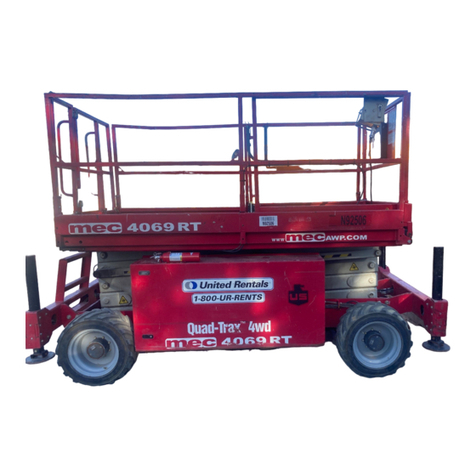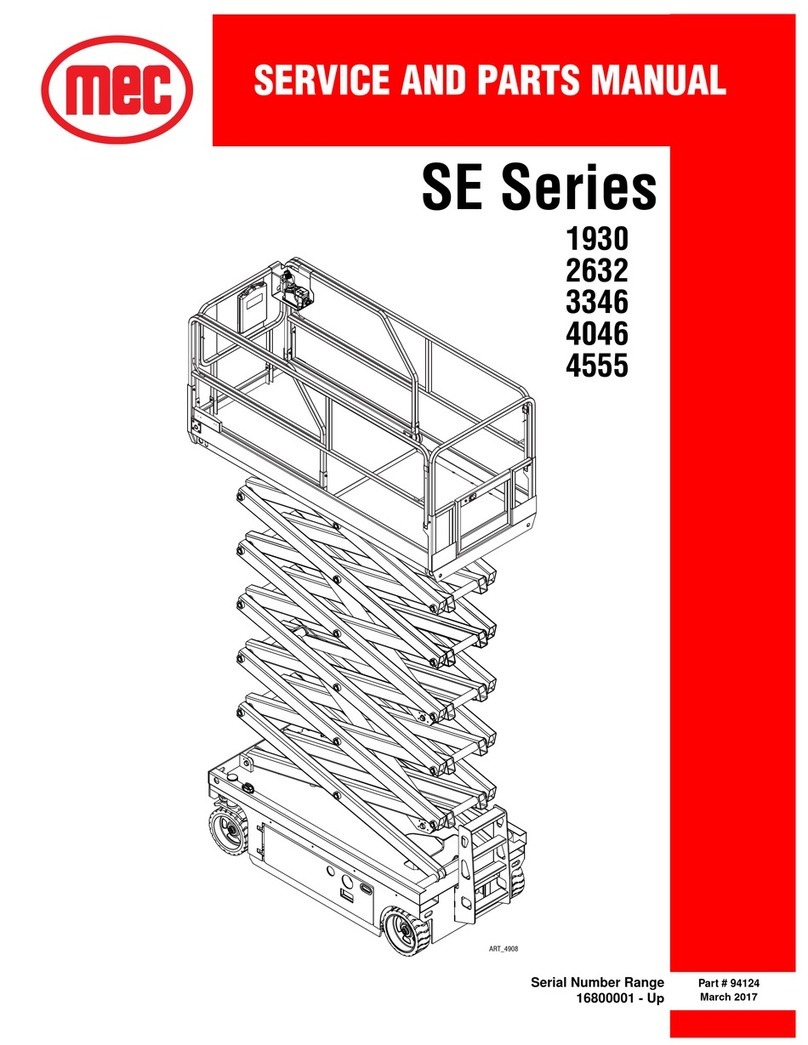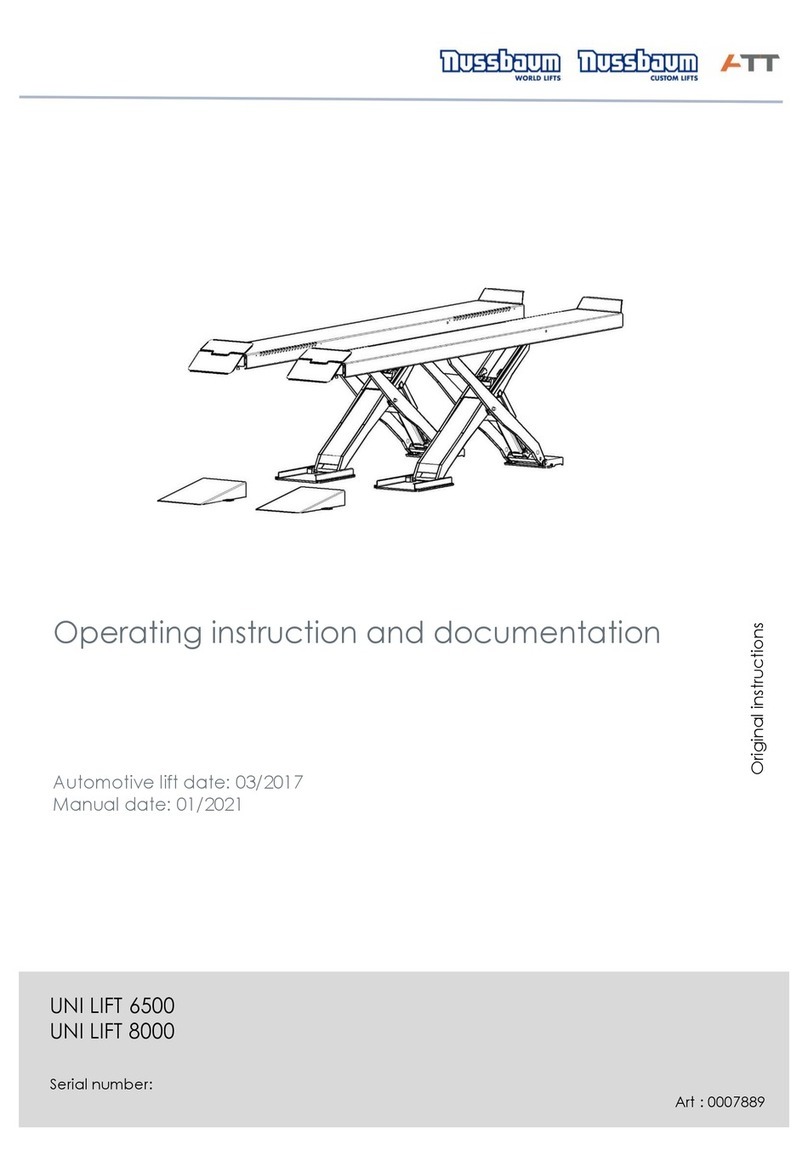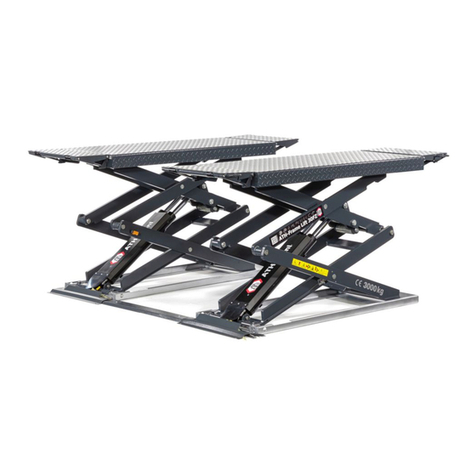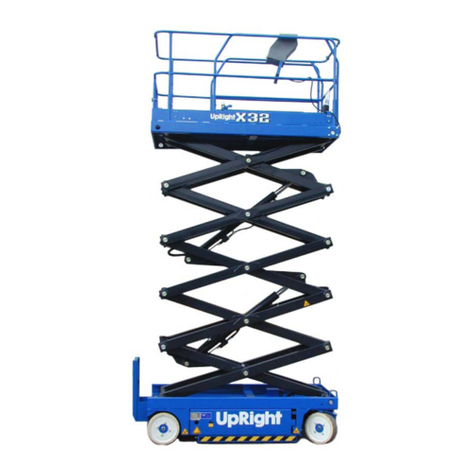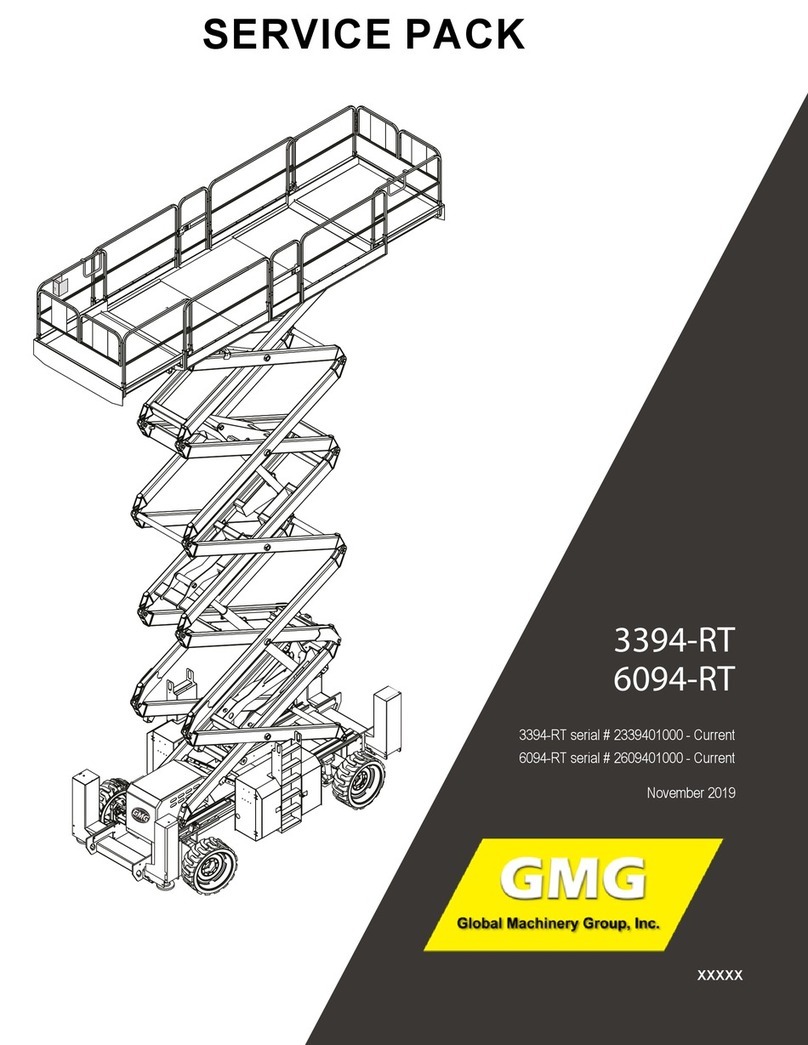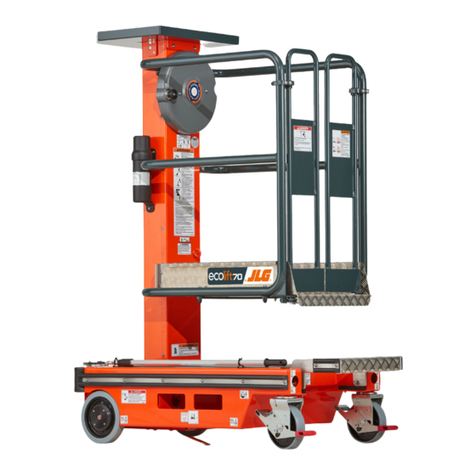
8
Trouble
Electric motor does not run.
Electric motor runs but will not
raise lift.
The lift does not stop 9″ (250mm)
fromtheoorbutkeepslowering,
producing a warning signal during
the lowering phase.
Cause
1. Check fuse or circuit breaker.
2. Checkforcorrectvoltagetomotor.
3. Inspect all wiring connections.
4. Faulty motor contactor.
5. Blownfuseon24Vpowersupply.
6. Faulty Transformer.
7. The motor thermic switch is
activated from overheating.
1. Motor runs in reverse rotation.
2. Load too heavy.
3. Lowuidlevel.
4. One or both manual operators
(A1-B1) on the hydraulic block
are open.
5. The lowering valve gaskets or
hydraulic block gaskets are
damaged or loose.
6. One or both manual operators
(A2-B2) on the hydraulic block
are open.
7. Oil filter is clogged.
8. Faulty hydraulic pump.
1. Faulty or improperly installed
proximetry.
Remedy
1. Replace blown fuse or reset
circuit breaker.
2. Supply correct voltage to motor.
3. Repair and insulate all connec-
tions.
4. Check the contactor coil opera-
tion and make sure it is activated
whensuppliedwith24V.
5. Check the fuse on the transform-
er and replace it if necessary.
6. Check the output voltage of the
transformer:
OUT:24V
7. Wait for 10 minutes and try start-
ing again; then, using a tester
make sure contact is closed
again.
1. Switch the phase and make
sure motor turns in the direction
indicated by the arrow.
2. Check vehicle capacity.
3. Fill tank with Dexron III ATF or
ISO32.
4. Close manual operators.
5. Check the gaskets and replace if
necessary.
6. Check and tighten screws.
7. Check and clean.
8. Check that oil comes out from
one of the A-1 - A-2 outlets on
the hydraulic block after discon-
necting the corresponding pipe.
Replace the pump if oil does not
come out from A-1 - A-2 outlets.
1. Check the proximetry and re-
place it if necessary.
TROUBLE SHOOTING
